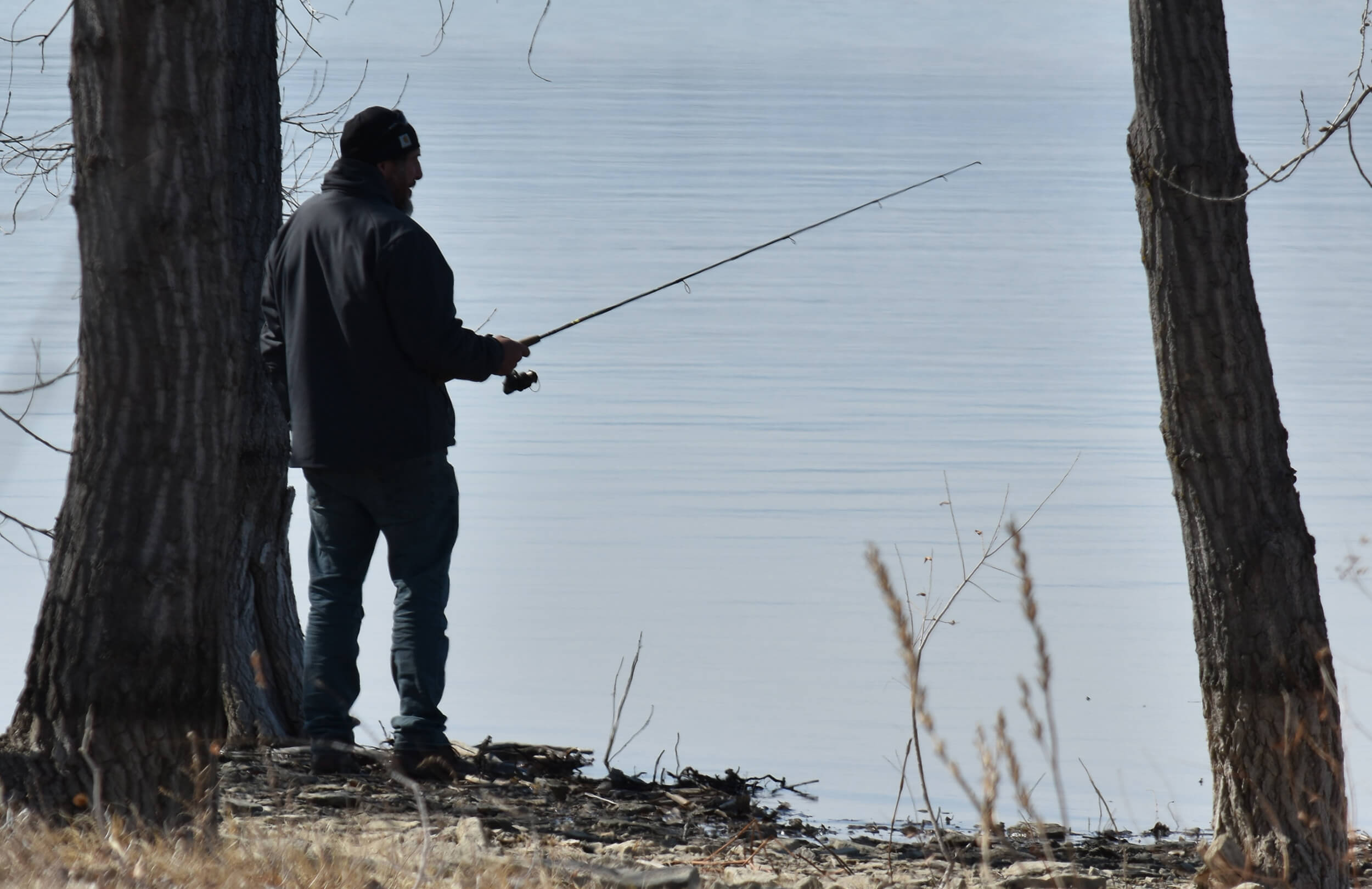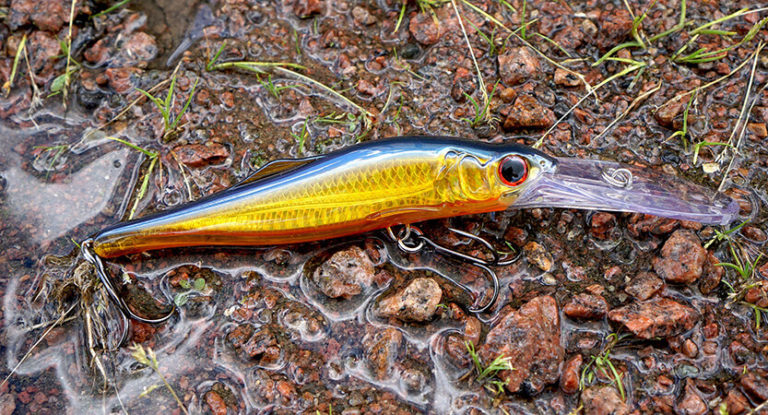Bass – a fish of the family Centrarchidae, perch-like order. As with some other fish that are “natives” of the “New World,” there is some confusion in the names. But there is one feature. Americans most often call the bass or florida bass, green bass, etc,… as well as similar fish of the genus black bass, the word bass. The same thing now applies to fishermen in some other countries. This is due primarily to the fact that large-snapped perch is successfully resettled in many regions of the world, where it becomes an excellent fishing target for amateur anglers, as well as during various competitions.
Here is an overview of the content of this tutorial, feel free to jump to any section you care about:
For more fishing instructions, take a look at these popular Trizily links: Chub Fishing.
- The 7 best spinning reels 2022
- The 7 best spinning rods 2022
- The 9 best fishing lines 2022
- The 7 best fly fishing reels 2022
Bass Fishing
Characteristics of bass
This species is characterized by a dense, somewhat elongated, downed body. Body height in the ratio of length is 1/3. With age, the body of the fish becomes taller. The trunk, compressed from the sides, as well as part of the head, is covered with medium-sized scales. The upper body is dark olive green. The head is large, the line of the mouth extends far beyond the posterior border of the eyes. Eyes are large, predatory. On the head are oblique, dark stripes. On the sides of the body are black or dark spots that form a strip along the entire body.

Older individuals are darker in color. The lower jaw is longer than the upper. The dorsal fin is divided by a notch. The relatively small front has 9-10 spiny rays. The back of the fin is soft, with one hard beam. The anal fin also has spiny rays. Powerful caudal peduncle clearly defined, with notched fin. Largemouth bass is the largest representative among black perches, while females are larger than males. Dimensions can reach a length of up to 75 cm and a weight of more than 11 kg.
Habits of bass
Bass is a resident of standing or slow-flowing, shallow reservoirs. An important feature is its thermophilicity, which creates the main problems with breeding in some waters. It is an ambush predator. It prefers to be in thickets of vegetation or in confined places. The main depth range is up to 6 m. Often used for ambush uneven terrain of the coast, cave or burrow. In this case, the fish primarily relies on visual orientation. The predator does not have any special food preferences. Large individuals can even attack waterfowl. Often the target of these predators are various amphibians, crustaceans, and small mammals. They grow very quickly, especially in size, females succeed. In reservoirs, where vegetation is poorly represented, leads a more active lifestyle, while being quite aggressive and can squeeze out other species.
How did bass breed
Spawning occurs in the spring and summer, starting in March. Fishes arrange like nests in small dimples in sandy or rocky soil, often among aquatic vegetation. Accompanied by courtship games, females can lay eggs in several nests at once. Males guard the clutch, and then flocks of juveniles for about a month. The fry grow very quickly, already with a body length of 5-7 cm from the larvae of various invertebrates, they switch to feeding on fish. Puberty occurs within 3-5 years.
Bass fishing: Techniques, bait and gear
Bass fishing techniques

Bass is a kind of “brand” in the world of sport fishing. Along with the “New World” in the regions where the breeding of the large-eared perch was successful, it has become an important object of commercial fishing. Among fishermen-athletes, specialized competitions are held for fishing this fish. The “trendsetters” are North Americans, a whole industry works for this type of fishing. Now this direction in sport fishing has captured the whole world. Commercial breeding for bass fishing is actively developing in southern Europe, North Africa. Bass fishing has completely occupied Japan. The main type of fishing for bass is fishing on artificial baits using spinning and casting rods. Currently, sports and amateur fly fishing are actively developing. Largemouth bass, like other active predators, respond well to natural baits. To do this, you can use live bait, frogs, large worms and more.
Spinning for bass

The American sports bass league has greatly influenced the fishing style and gear selection of amateur spinning players. The widespread use of lightweight multiplier reels for this fishing was a powerful impetus for creating a large number of spinning and casting gear. As a result, multiplier reels are now created, with which you can cast the lightest lures. The tactics of bass fishing in traditional reservoirs does not require ultra-long casts; accuracy and high sensitivity of gear are more important. On this basis, and built a selection of gear for fishing this fish. Most often, these are not long fishing rods of fast action, which make it possible to clearly hook and quickly survive from overgrown sections of a reservoir. But this recommendation is not always suitable for fishing on artificial reservoirs in Africa and southern Europe, where bass is actively bred for commercial purposes.
Fishing gear for bass fishing by spinning technique
The water area, as well as the coastline of such reservoirs is quite deserted, so it is quite appropriate to use longer, more powerful rods. In any case, the use of ultra-light forms of slow order is not the best choice for bass fishing. The use of multiplier reels requires a certain skill and is not always justified for beginners. Moreover, with a little skill, the use of spinning and baitcasting reels more familiar to Europeans does not create any problems when catching bass.
Baitcasting reels are more demanding in training gear and in choosing lures. However, the casting itself requires additional training. Otherwise, fishing in a distant body of water in a “precious” time for a short vacation can turn into an endless untangling of “beards” and the search for the optimal weight for casting baits.

From the position of the best sensitivity of the tackle, the most appropriate solution is to use braided cords that create maximum contact with the fish at the time of bite. The use of fluorocarbon woods, as the main winding of the reel is also quite justified. Recently, fluorocarbon has been most popular among athletes and amateur fishers as leashes or as a shock leader. It is worth noting that the bass is often very demanding on the selection of lures, the depth of the wiring and so on. This requires a certain knowledge of the conditions of the reservoir and the life rhythms of the fishing object.
Fly fishing for bass
Equally interesting is bass fishing for fly fishing gear. Taking into account the fact that the main place of existence of this fish is the coastal or not deep part of the reservoir, fishing can be carried out both from the shore and from boats. Fishing to a greater extent occurs on large imitations of various animals, including surface baits. More often used one-handed rods, starting from grade 6. Well-known cord manufacturers make entire series of specialized products. The main difference between these models is a short head, but now a large arsenal of cords and shooting heads is suitable for this type. Among the most popular and easily mastered cords are Triangle Taper Bass or Ambush Triangle Taper from Royal Wulff.
Bass fishing lure
A huge number of lures are used to catch basses. As already mentioned, the fish is quite aggressive and gluttonous. She hunts in all layers of water. When fishing, a variety of wiring techniques are used. Therefore, it is possible to use almost the entire possible arsenal of modern spinning and fly fishing lures. Depending on the conditions of the pond, spinning players can have various spinners, spinner bates, volumetric baits: lobed and bezelless, silicone imitations, etc. Bass can be perfectly caught using natural, lively attachments and using even the simplest float or bait rigs.

For fly fishing, the choice of lures comes down to large, floating and sinking imitations. It should not be forgotten that half the success is the right tactics and wiring technique, with the expectation that in most cases the large-mouthed bass relies on vision in the choice of victim. When choosing a specific bait, it is first of all necessary to understand what layer of water the active predator is in.
Where to catch bass
The natural habitat of large-mouthed bass are various reservoirs of North America: from the Great Lakes to the Mississippi basin and more. Artificially settled in many reservoirs around the world. For Europeans, the most interesting are the reservoirs of Spain and Portugal. Largemouth bass is actively bred in Croatia. We should not forget about the popularity of bass in Japan.






![The 9 Best Headlamps for Fishing in 2023 [Buyers Guide] 16 The 9 Best Headlamps for Fishing in 2023 [Buyers Guide]](https://trizily.com/wp-content/uploads/2022/03/best-fishing-headlamps-768x768.jpg)